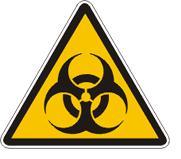Biohazards in Engineering
Biohazard Management
The emerging ‘joint’ discipline where biological processes and systems are co-joining with traditional electronics and mechanical systems warrants some background. The new requirement for technologists and engineers working in the electronics space to manage biohazards ans well as housing laboratory and storage facilities is sadly overlooked by many, including those in the "bio" professions.
The construction and ongoing management of these ‘bio-facilities’ poses some difficult and unanswered questions when endeavouring to comply with all relevant standards.
By way of example however, following the authority rules “to the letter” as dictated at this time by each Australian authority will often breach one or more of their ‘mandatory’ requirements. This is probably the case in EU and North Amercia right now too.
The certifiers and consultants recognise this at a hands-on working level, and generally will listen to applications for exception or waiver, as ultimately the bio-lab is to be a functional space, as opposed to being the subject of a thesis.
Some of the applications observed involving biological materials in telecommunications and electronics are drawn from The University of Sydney in 2005, and these included, nanotubes, displays, bio-memory devices and others. Other applications mandating serious biohazard management are pacemaker repair centres, cochlear upgrades and failure analysis of old devices, some EEG, EMG and ECG machines.
The same expansive rules also apply to the re-cycling / re-manufacturing of electronic systems that have been used in biological environments, eg, pacemakers, cochlear implants and the like. It is no longer sufficient to simply comply with just ‘electrical’ or ‘telecommunications’ standards when dealing with biologically related technology systems.
The Australian Environment
There are a number of standards setting agencies that related directly to bio-technology and related systems, some which result in contradictory objectives when combined. These are broadly highlighted, and while these standards are subject to change, it is up to the reader to follow up any changes or seek any exemptions or seek formal certifications. It is strongly recommended to engage expert consultancy advice to keep abreast of changes.
All authorities generally call up annual inspections of facilities and a detailed review of work practices / processes to ensure on-going compliance. This includes witnessing audit trails and record keeping rules (RKR). There may be related insurance underwriter requirements linked to this annual event as well.
Standards Australia (AS/NZS)
These standards call up containment requirements categorised into the types of substances to be contained. They also deal with animal as well as any bio-hazard material. The standards define PC1, PC2, PC3 and PC4 laboratories and related personal safety equipment. This deals with negative room pressure requirements, non potable water management, air filtering, surface treatments, safety showers, door access, non-dust settling and fully cleanable rooms.
Standards also cover fume cupboards.
The ‘intent’ is to provide a containment of any biohazard material, as is generally not at conflict with the BCA (below).
Office of Gene Technology Regulator (OGTR)
This federal government department was based on the Commonwealth Gene Technology Act 2000 took effect on 21 June 2001. OGTR is concerned with genetic material and modified (GM) materials and biotechnology. In addition to calling up specific procedures and strict material audit tracking, they also call up strict storage requirements, security and import requirements of material that is not plant or animal. This could particularly apply to electronic related systems. They also manage the release of GM material into the environment. OGTR presently uses 3rd party certifiers to certify facilities and processes.
The intent of the OGTR is to ‘contain’ and ‘manage the release’ of modified materials into the environment.
Australian Quarantine Inspection Services (AQIS)
This department is solely concerned with the control of plant or animal materials that have been imported into Australia. While not formally building on Standards Australia requirements, they do define procedural and material audit tracking, and call up strict physical security requirements.
The ‘intent’ is to contain imported plant or animal material into our delicate island, noting that under the recent USFTA with Australia, Biosecurity Australia has one by one 'inexplicably' overturned existing protocols to allow imports of all sorts of produce including bananas, apples, and pork and probably bio-electronics related products as well.
Building Code – Australia (BCA)
While not specifically related to the construction of bio-facility environments, the BCA is the overarching code for the built environment in Australia. The BCA applies to all buildings and building safety and cross-references and links to Standards Australia. Many of the requirements set out in the BCA get contradicted by some of the authority requirements shown above. The BCA defines items like fresh air (to humans), fire escape, emergency lighting, lighting etc. Accredited BCA Consultants and Accredited Consulting Engineers can perform facility certification.
The ‘intent’ of the BCA is to provide a safe built environment for humans.
Biosecurity Australia
This is also a federal government depart that manages and approves the trade aspects of goods that have biohazard risk. While presently not openly addressing technology or electronic risks, some of the components of the good they manage probably have technology impacts.
For more information, refer to the following websites:
